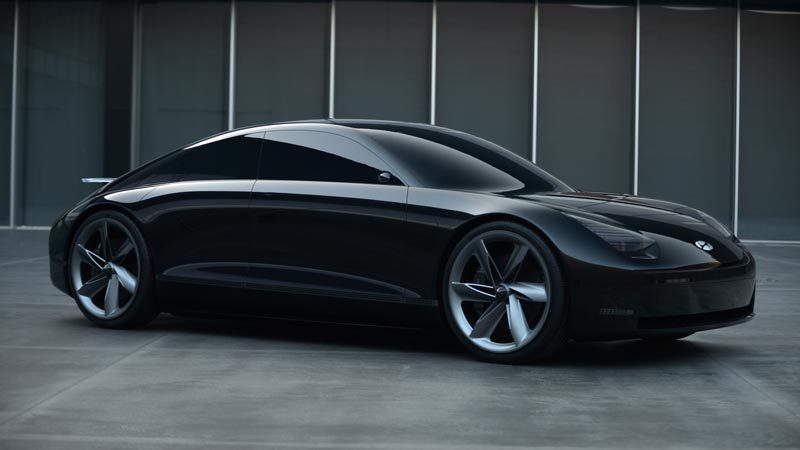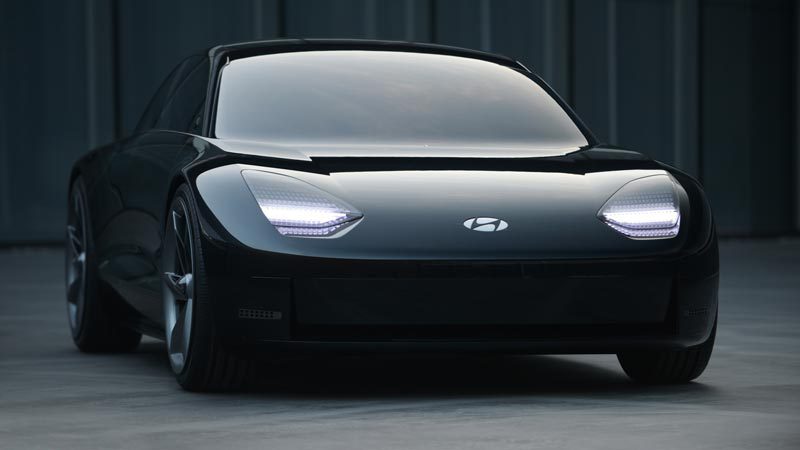NYC Mayor To Sign Order For All Municipal Vehicles Toward Electrify
New York Mayor Bill de Blasio signed a decree requiring the city to electrify its entire municipal fleet by 2040. This includes not only cars, but everything from ambulances and police cruisers to refuse trucks and ferries, according to a press release issued by the mayor's office.
Electrification of the New York City Municipal Fleet will begin shortly. The first electric school buses will appear on the city streets this year, and 4,000 vehicles will be either replaced by electric models or converted to electric power by 2025, according to the mayor's office.
At the end of 2015, Mayor Bill de Blasio called for replacing a large number of municipal vehicles with electric vehicles, which would potentially give New York the largest electric municipal park in the country. But then it failed.
In early February, the city’s Mayor signed an order and intends to implement it.
The order consists of several sections:
Section 1. 100% Electric Fleet by 2040. It is the goal of the City of New York to achieve an all-electric, carbon neutral fleet by the year 2040.
Section 2. Clean Fleet Design and Electrification. The Department of Citywide Administrative Services (DCAS) and NYC Fleet will issue, implement and update a Clean Fleet Transition Plan (CFTP).
The plan will outline alternative fuel, fuel efficiency, and electrification requirements for all City fleet units by type. The plan will include a schedule for adoption of cleaner vehicles and technologies which will lead to a fully-electric, carbon-neutral fleet by 2040.
Section 3. Safe Fleet Design. The plan will be informed by study of City actual crash trends, CRASH Stat, for fleet as tracked by DCAS. All agencies will fully comply with citywide crash tracking. The SFTP will also review safety outfitting that is implemented for specific fleet segments only and / or being tested.
Section 4. Fleet of the Future Network. DCAS, working with the Department of Transportation (DOT), the Business Integrity Commission (BIC), the Department of Consumer and Worker Protection (DCWP), the Mayor's Office of Sustainability (MOS), and others will establish a contact list and communication network for public, private, and non-profit fleets operating in the five boroughs of the City of New York. This network will be used to establish lines of communication on issues of sustainable and safe fleet operation. DCAS will establish newsletters, events, and trainings aimed at these partner fleets and will share best practices throughout the network.
Section 5. Agency Cooperation. All agency heads are directed to cooperate fully with DCAS and the City's Chief Fleet Officer in implementing and complying with this Executive Order.
Of the 25,104 on-road vehicles currently in its fleet, 2,134, or 8.5%, are “electric,” according to the New York Daily News (it isn’t clear whether this figure includes hybrids). The city also has 5,613 off-road vehicles like carts and light towers, and about 10% or 548 of them are electric. In 2018, the city announced plans to electrify its public bus system by 2040, and in 2019, it bought 15 New Flyer Xcelsior CHARGE electric transit buses.
The mayor’s office expects to see a 50% reduction in emissions from the fleet by 2025. The effort will cost $36 million next fiscal year and the city is assessing the price tag going forward.
“To address our climate crisis, New York City needs to stop burning fossil fuels and electrify everything," said de Blasio. “That’s why we’re making our entire fleet electric by 2040 - the equivalent of taking 750,000 cars off the street."
Currently, the city is receiving excellent results from electric vehicles in its park. In March 2019, NYC Fleet announced that its clean electric vehicles provide significant savings in maintenance costs: “Right now, servicing costs with our all-electric vehicle models is dramatically less than with gas, hybrid, or hybrid plug-in models.”
“All early indicators are that we are achieving the fuel, emissions, and maintenance benefits of this exciting transition away from the internal combustion engine,” they wrote.
The order consists of several sections:

www.tesmanian.com/blogs/tesmanian-blog/the-mayor-of-new-york-signed-an-order-to-electrify-the-entire-municipal-fleet-by-2040





www.daimler.com/company/business-units/daimler-trucks/
Commercial fleets choose electric as climate reality dawns
Australian commercial fleets are charging ahead with electrification, according to the latest Vfacts figures released today by the Federal Chamber of Automotive Industries (FCAI).
Sales of both passenger cars and SUVs in the non-private sector increased by five-fold from a low base in February compared to the same month in 2019, even amid an economic downturn punctuated by catastrophic fires, flood and drought.
Or it could be, because of it?
If nothing else, the national mood – and the lacklustre response of the Morrison-led Coalition government – these past months has placed the focus of Australians firmly on what must be done to curb carbon emissions.
For fleets and businesses, it would seem that the answer is in switching to zero or low emissions transport, or holding off on a new purchase until a suitable electric vehicle is available – a trend that has been noted by market analysis firm Roy Morgan on multiple occasions.
Of course, the lower maintenance costs of electric vehicles, and escape from fluctuating fuel costs, is also a selling point for the commercial sector – although clearly not for the federal government, whose Comcar fleet, as we reported, passed on electric options including Tesla Model S and Xs in favour of diesel BMWs and hybrid Toyota Camrys.
While the rest of the automotive industry continues on a now 23 months-long sales slump, private passenger, and commercial electric and plug-in hybrid sales are going up.
The private passenger sector was, for electric vehicles, the only one that did not see big increases in sales with just a 2.6% increase year-to-date compared to 2020 – based on Vfacts data.
In fact, private passenger sales also likely delivered the biggest increase, as Tesla – which saw a massive tripling of electric car sales in 2019 following the introduction of the Model 3 – does not report local sales figures.
The Driven can reveal, however, that on the first of February there were more than 660 Tesla vehicles destined to Australia, according to sources familiar with the matter.
While we cannot ascertain yet how many of those have been delivered (and therefore count as a sale), or how many more were placed on other ships throughout the month, these figures indicate an increase in private passenger sales of well over 1,000% YoY and almost the same year-to-date compared to 2019.
Hybrid sales (of the “self-charging” variety) saw a huge increase in the SUV sector, both private and non-private, an indication of Australia’s openness to plug-in electric versions in the much-loved segment, but for a lack of available options.
While Hyundai introduced the compact Kona Electric in 2019 and Mitsubishi has for several years now sold the plug-in electric Outlander, these are few and far between. We noted last year also the surprise popularity of the Toyota Rav4 hybrid over its petrol counterpart.
By contrast, petrol and diesel sales continue to fall in all segments with the exception of a small rise in the private SUV sector.
FCAI chief executive Tony Weber has gone as far as calling the disinterest in new petrol and diesel cars a recession, but failed – again – to note the increasing position electrified vehicles are claiming in the industry.
“The Australian new vehicle market has now seen a downturn each month for the past 23 months. In economic terms, a recession is declared after two quarters of negative growth – and this industry has now seen seven consecutive quarters of negative growth,” Weber said.
The slump in petrol and diesel sales was no doubt a factor in General Motor’s decision to announce a shutdown of the iconic Holden brand, and though broadly this a result of the cost of electrification on a global market, we can’t help but think Holden understood it may struggle to convince fans to accept the brand in electric format.
“There is no doubt that this is an extraordinarily difficult time for the automotive industry – a situation sadly underlined by the recent announcement of Holden’s withdrawal from the Australian market,” Weber said in a statement.
Hyundai reveals electric and autonomous goals with new Prophecy concept

The Prophecy concept. Source: Hyundai
South Korean carmaker Hyundai has unveiled the Prophecy, an electric coupé-like concept with a long wheel base that the company believes will become “a new standard for the EV segment” as it readies itself to invest €50 billion ($A84.5 billion) into future mobility technology.
Unveiled in a live-streamed event – arranged in lieu of the 2020 Geneva Auto Show, which was cancelled due to the coronavirus – the Prophecy is a manifestation of Hyundai’s “optimistic futurism”.
Hyundai has a plan to bring 44 electrified vehicles to market by 2025, 23 of which will be 100% electric – a plan that no doubt spurred by the success of the Tesla Model 3.
With a smooth nose, cat-like headlights and panoramic roof, the Prophecy concept certainly looks the closest we’ve seen to the styling of the Tesla Model 3.
The Prophecy concept. Source: Hyundai
“We have brought to life yet another icon that establishes a new standard for the EV segment as well as pushing Hyundai’s design vision to even broader horizons,” said SangYup Lee, head of Hyundai’s global design centre.
From the side however, the Prophecy is something else. A generous wheelbase with a truncated rear end and a spoiler reminiscent of Italian design house Zagato stand out both literally and figuratively, contributing to the aerodynamics of the car along with the asymmetrical rims.
The Prophecy concept. Source: Hyundai
And on the interior, the Prophecy makes a complete departure from any likeness to the Model 3.
Inside, a startling tartan upholstery seeks to present a “lifestyle space,” as opposed to a standard automotive interior, while two joysticks replace the steering wheel, in a move geared towards autonomous driving.
The Prophecy concept. Source: Hyundai
There’s not a lot of details about the vehicle’s specifications, such as driving range or battery capacity, except to say that Hyundai has included a generous air intake below the bumper to assist with cooling the ample battery (we hope this is not the only battery thermal management it plans on including).
Nevertheless, it would certainly be interesting to see the Prophecy graduate from concept to production vehicle, if it can inherit the nimble responsiveness – and price tag – of the Hyundai Ioniq. If Hyundai can achieve this, and bring it to market in Australia, it would be sure to turn heads.
https://thedriven.io/category/ev-news/
- Forums
- ASX - By Stock
- Given all the well known issues...If the FIRB knocks back this deal is AVZ finished?
NYC Mayor To Sign Order For All Municipal Vehicles Toward...
-
-
- There are more pages in this discussion • 101 more messages in this thread...
You’re viewing a single post only. To view the entire thread just sign in or Join Now (FREE)
Featured News
Add AVZ (ASX) to my watchlist
Currently unlisted public company.
The Watchlist
LU7
LITHIUM UNIVERSE LIMITED
Alex Hanly, CEO
Alex Hanly
CEO
SPONSORED BY The Market Online















